Hello all. I'm new here and just learning about the Apple II; forgive my ignorance. I have the opportunity to purchase an original II. It has serial number A2S1-22012 and is board revision 820-0001-07. It appears to have onboard Integer ROMs (only four??) and an Applesoft firmware card. The owner believes the mainboard was replaced at some point, but he's adamant that it's still a "real" original II. I have another contact who believes this is a II Plus mainboard in a II's case, making it clearly much less valuable/desirable. Below you'll find all the pictures I have of the unit. I have several obervations/questions:
1) The owner expalined to me that some late II's did come from Apple with a Rev 7 mainboard, despite the fact that this board was technically developed for the II Plus. He also said that some early II Pluses came with Rev 4 boards. (Looking through the registry, this does appear to be true. Why would Apple do this?) He believes the mainboard in his unit is not original because having a Rev 7 board does not seem to square with a serial number of 22,xxx. According to the Apple II registry, this SN would suggest a Rev 3 or Rev 4 board. Looking through the registry, I'm very confused... One would expect a fairly orderly progression of board revisions and increasing SN, however that's not what I see. Looking back over the previous 10,000 or so numbers before this one, I see Revs 2, 3 and 4 randomly and in roughly equal proportions. Looking forward, I see Rev 3s, then Rev 4s, and it isn't until SN 66,8xx (almost 45k units past the unit in question) that I see a Rev 7. Would you agree that for this reason alone, it is highly unlikely that this unit was born with the Rev 7 mainboard that now sits in its case?
2) It's my understanding that one of the only physical differences between a II mainboard and a II Plus is the ROM. IIs had Integer ROM, II Pluses had Applesoft. One would imagine, then, that when Apple used a Rev 7 board in a II it would get Integer ROMs, and that very same board in a II Plus would get Applesoft ROMs. This board seems to have onboard Integer ROM, further evidenced by the fact that someone installed an Applesoft firmware card. If the mainboard had been pulled from an II Plus, wouldn't it already have onboard Applesoft ROM? Isn't this evidence that perhaps the unit did come from Apple with this board? It's hard to imagine that someone would purposely downgrade their II Plus board before transplanting it.
3) Are there any other physical differences between a II and a II Plus mainboard?
4) Is there any definitive way to tell if a particular mainboard came with a particular case? Is the serial number found on the mainboard anywhere?
5) It's my understanding that the power supply currently in this unit is not period correct. Is that true? If so, that seems to make it more likely that this is a Frankenstein II.
6) In this article, the section 'More Hardware Add-ons' says that the Rev 7 mainboard was released for the Apple II Plus in 1981. The board in my pictures clearly has 1979 on it. Is that a typo?
https://apple2history.org/history/ah06/
7) A highly subjective question, but what monetary value would you put on this machine, including the drives and monitor in the pictures?
That's all I can think of for now! Thanks so much for any detective work you can help me out with!

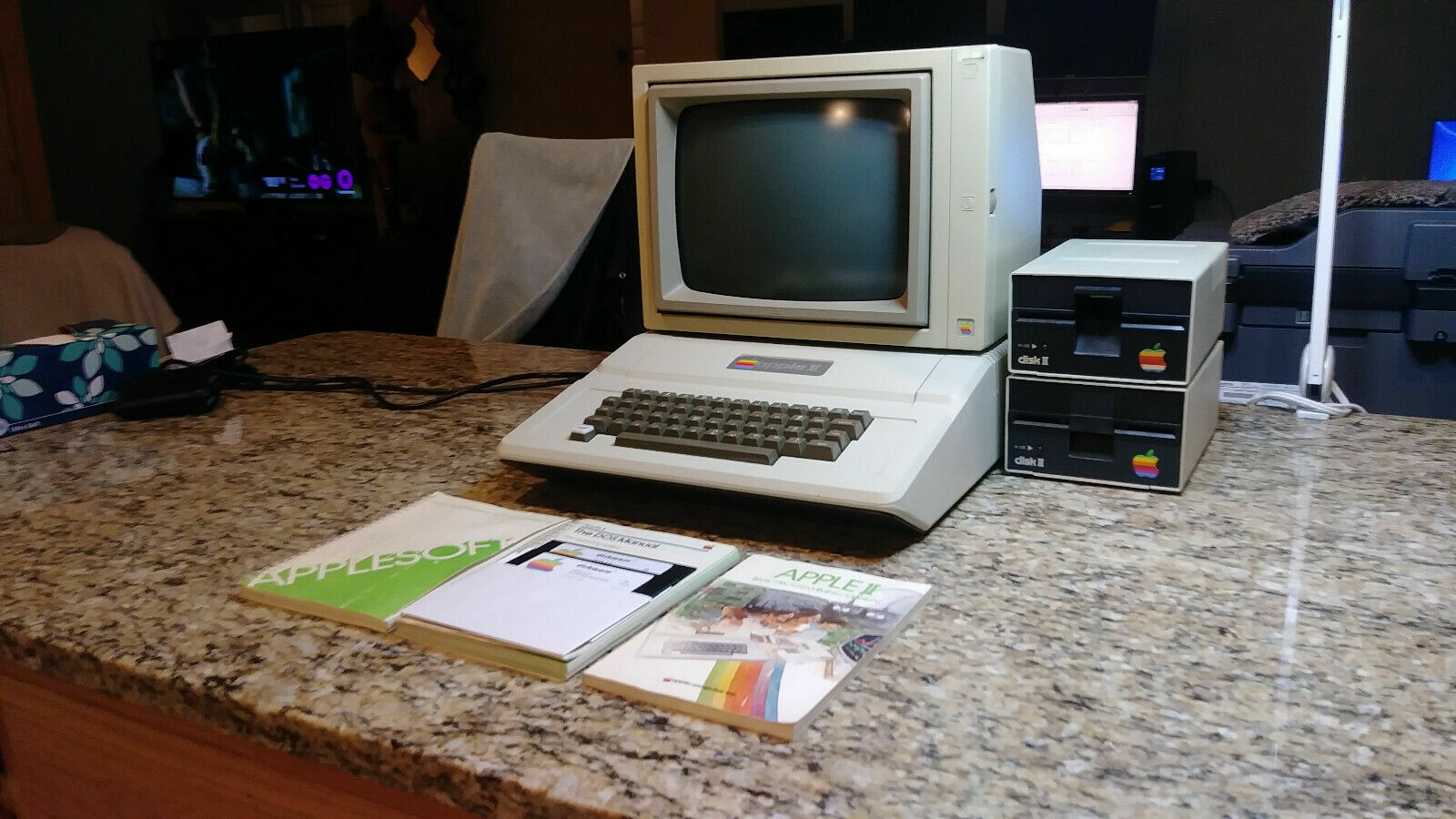

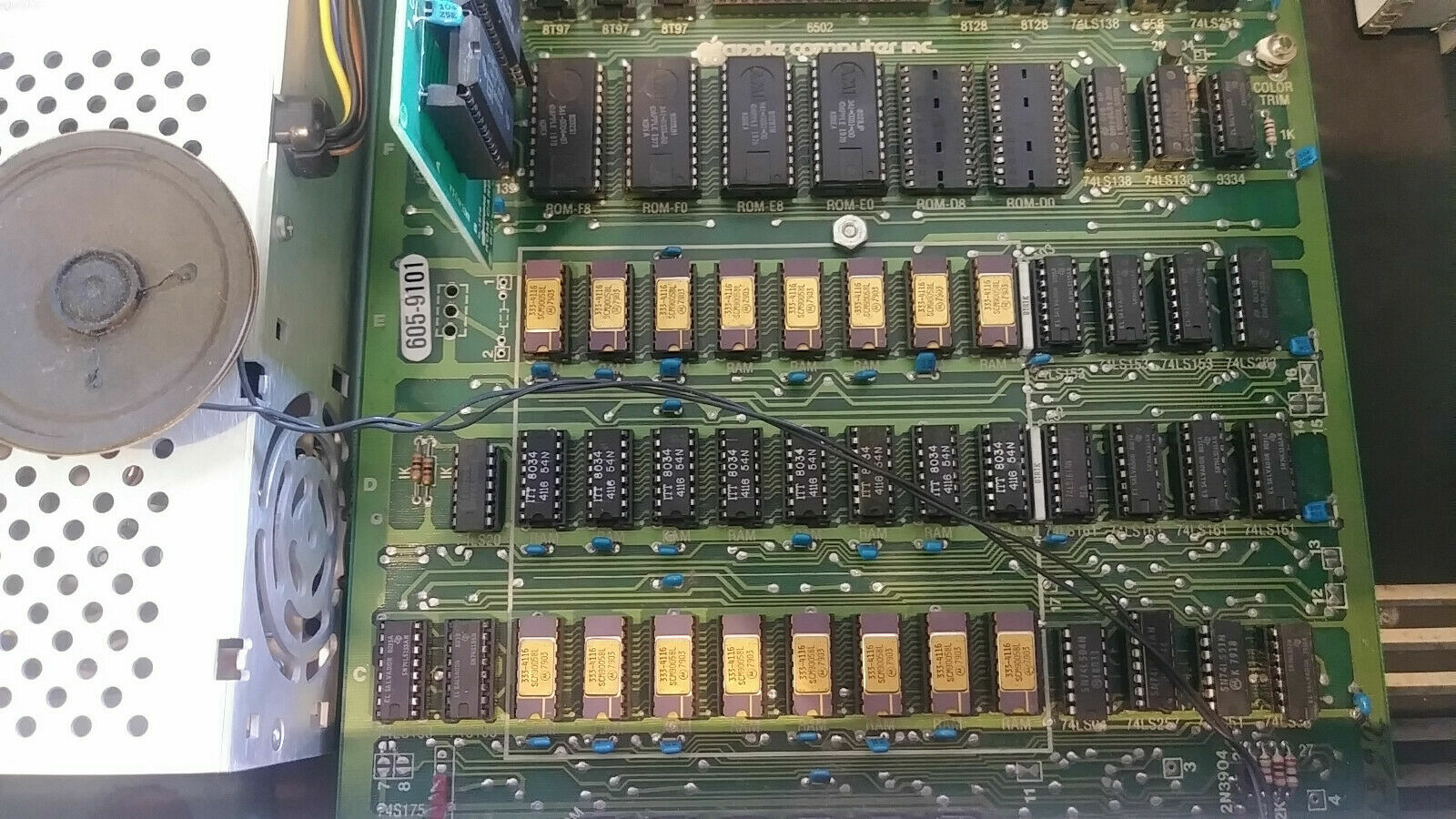
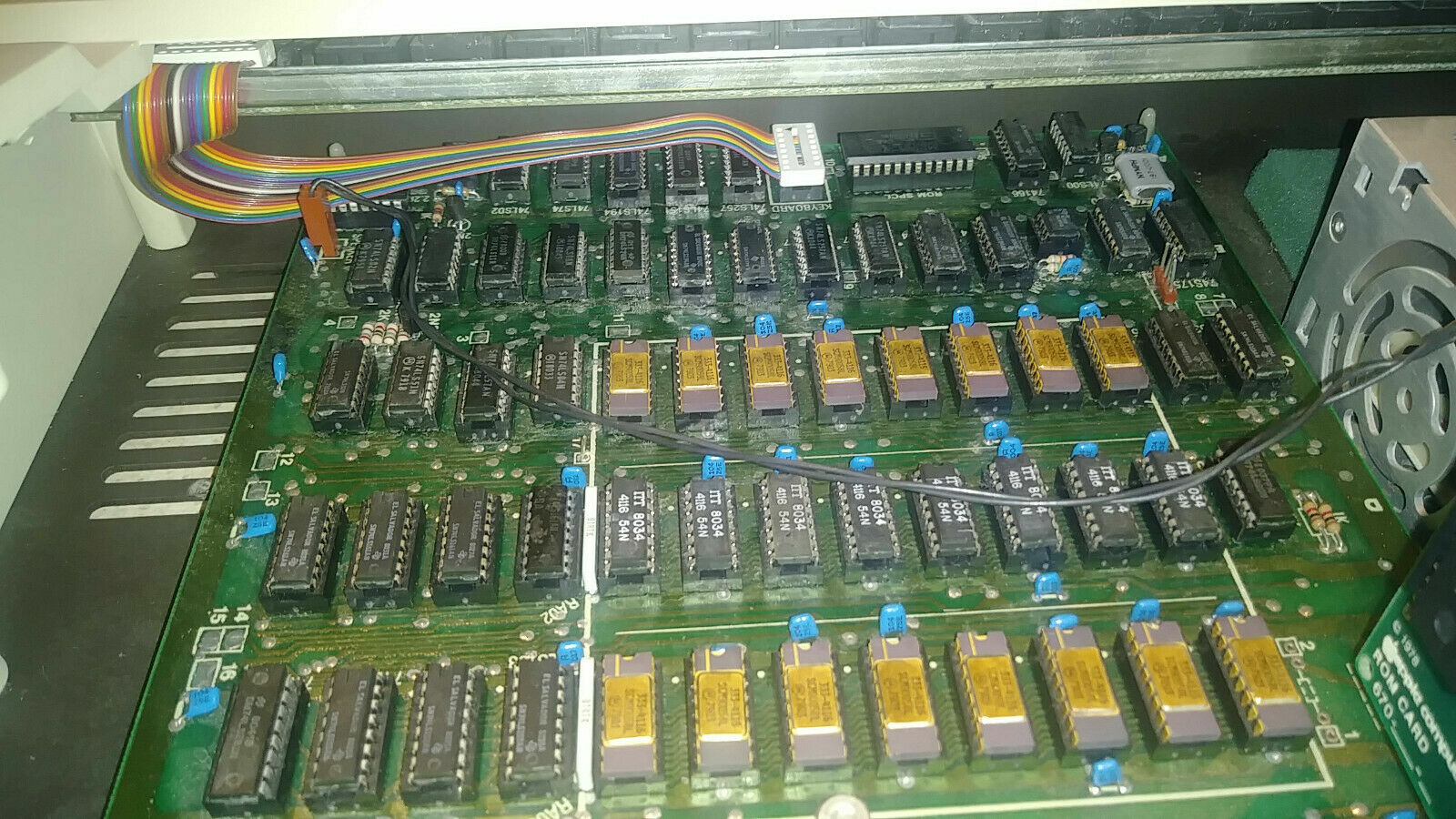
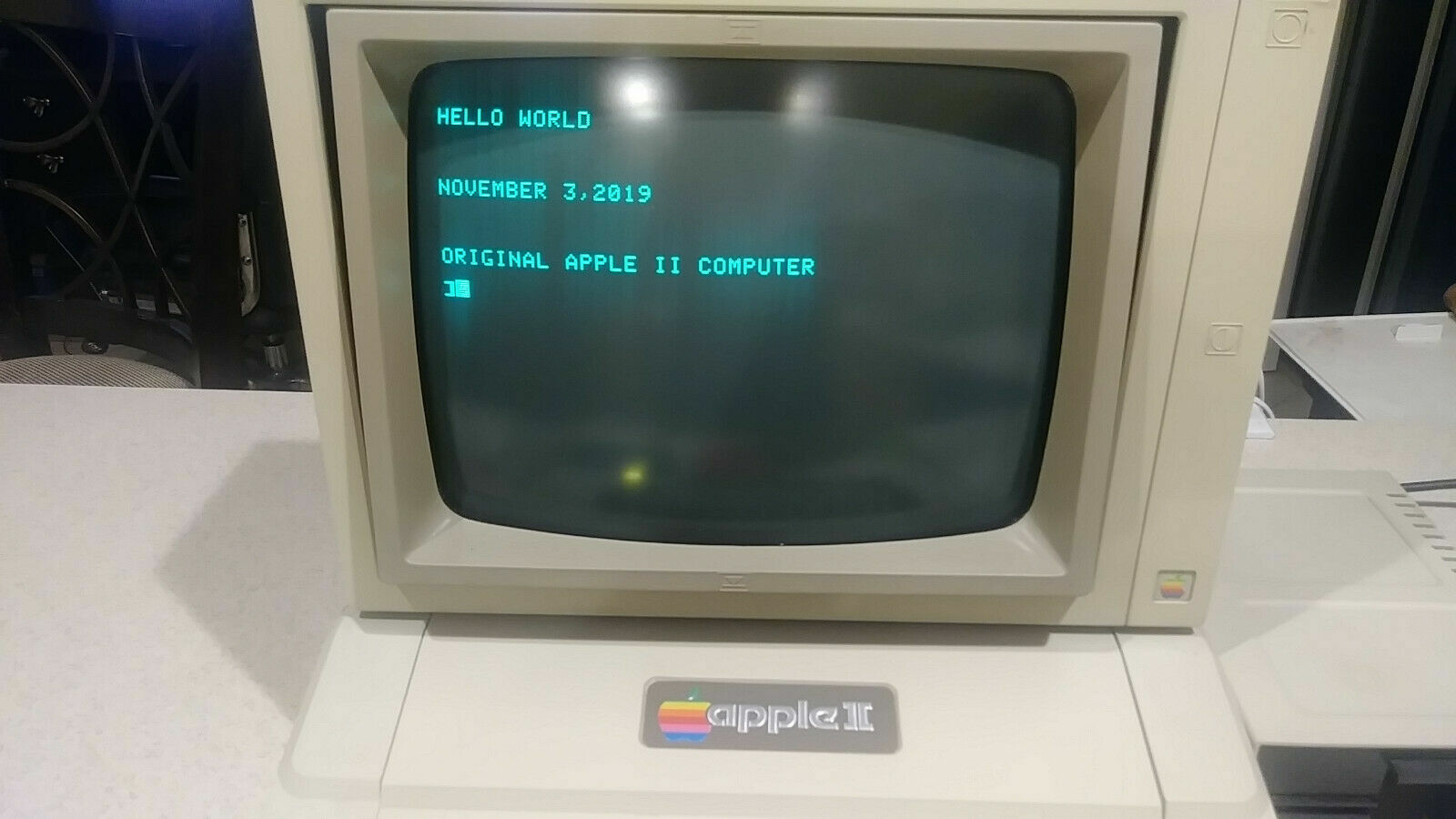
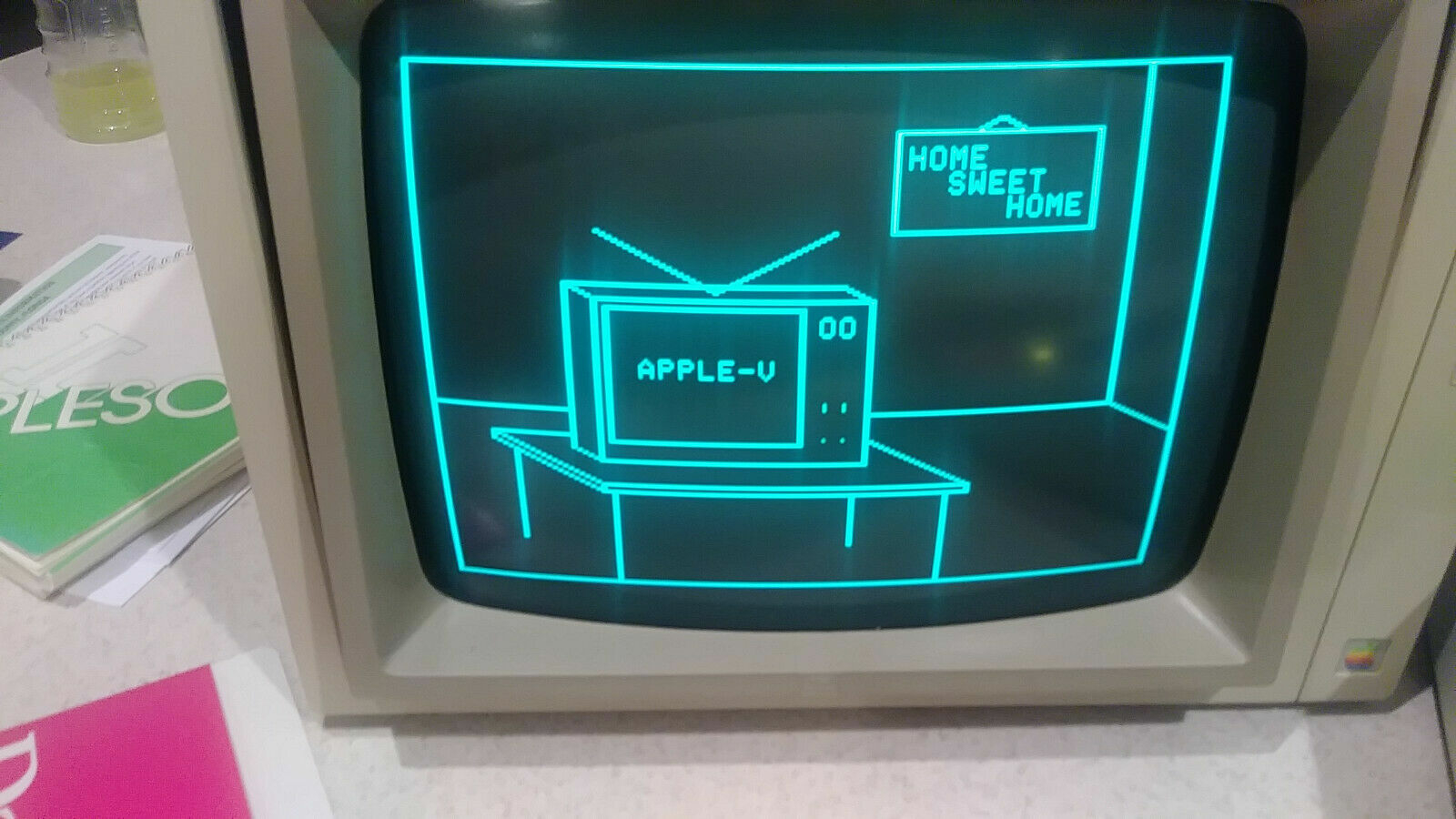
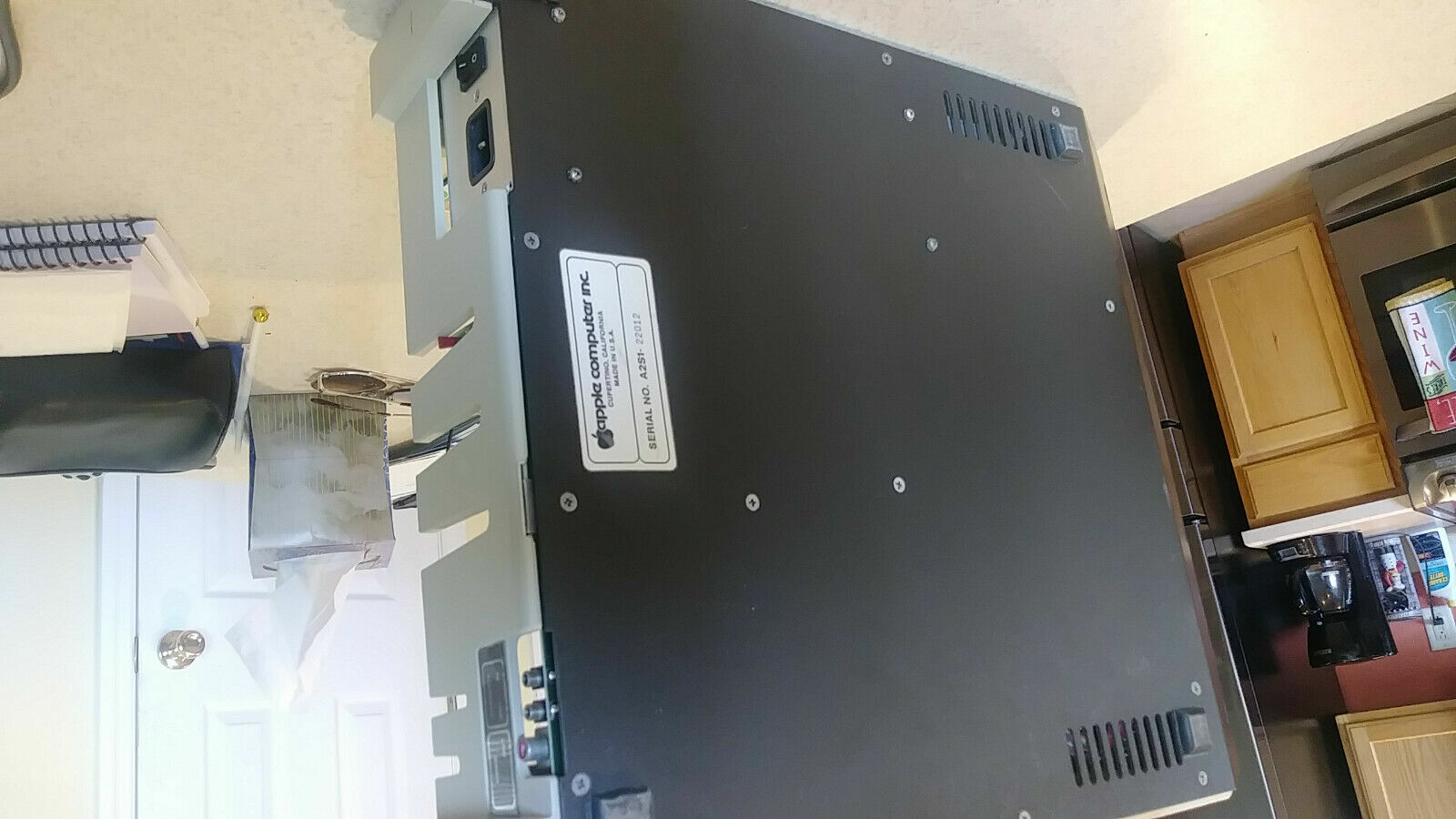
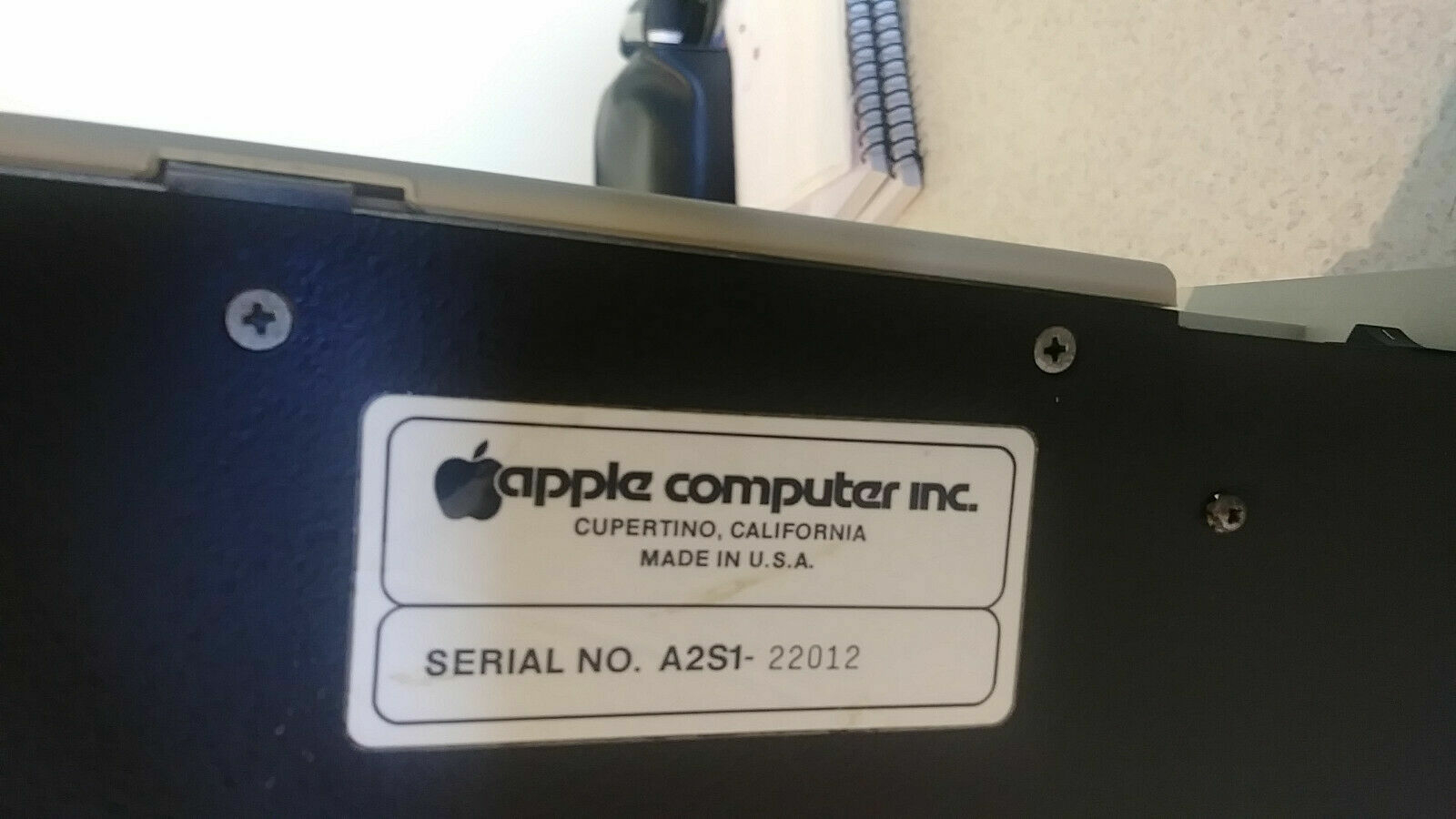
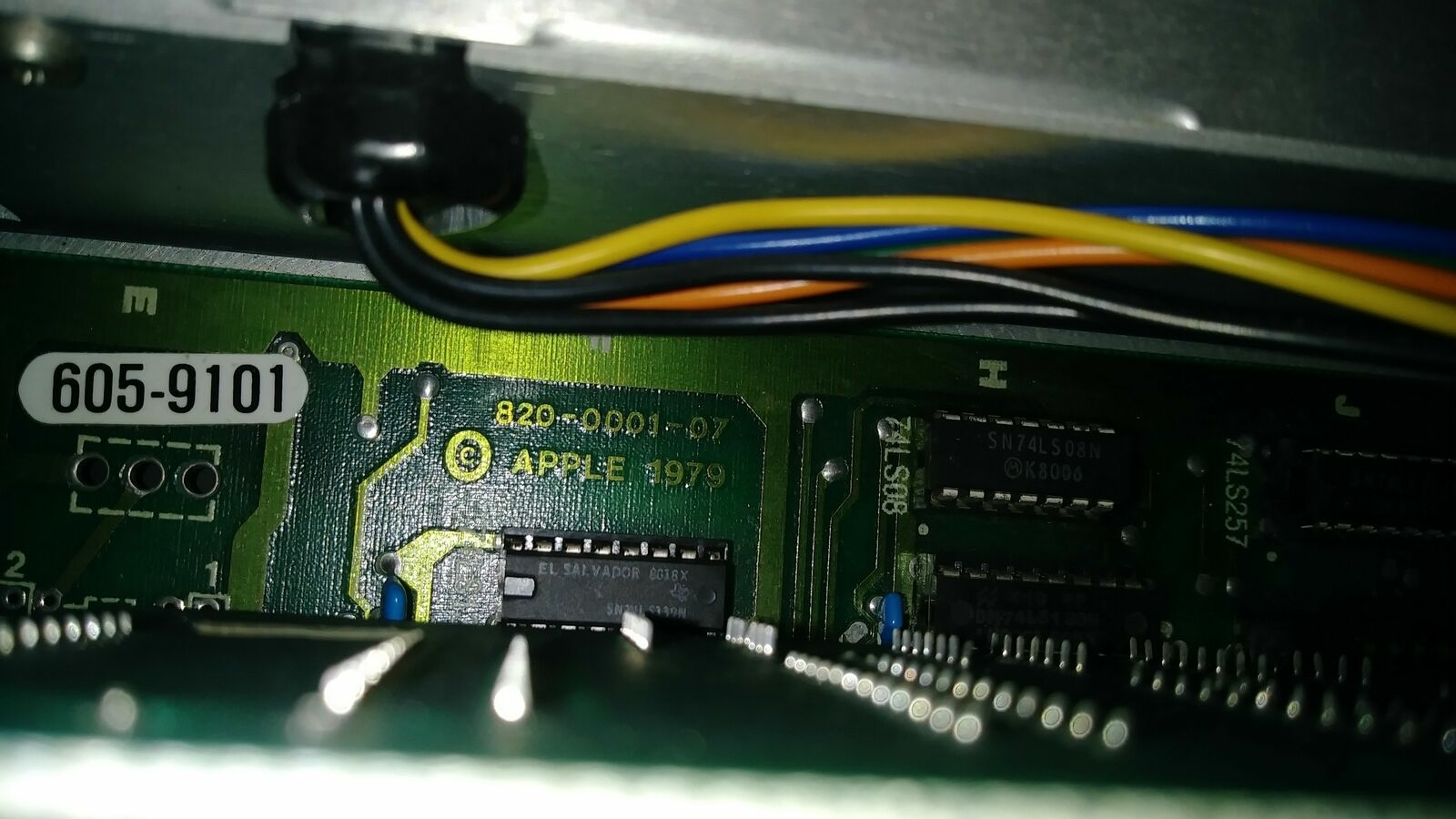
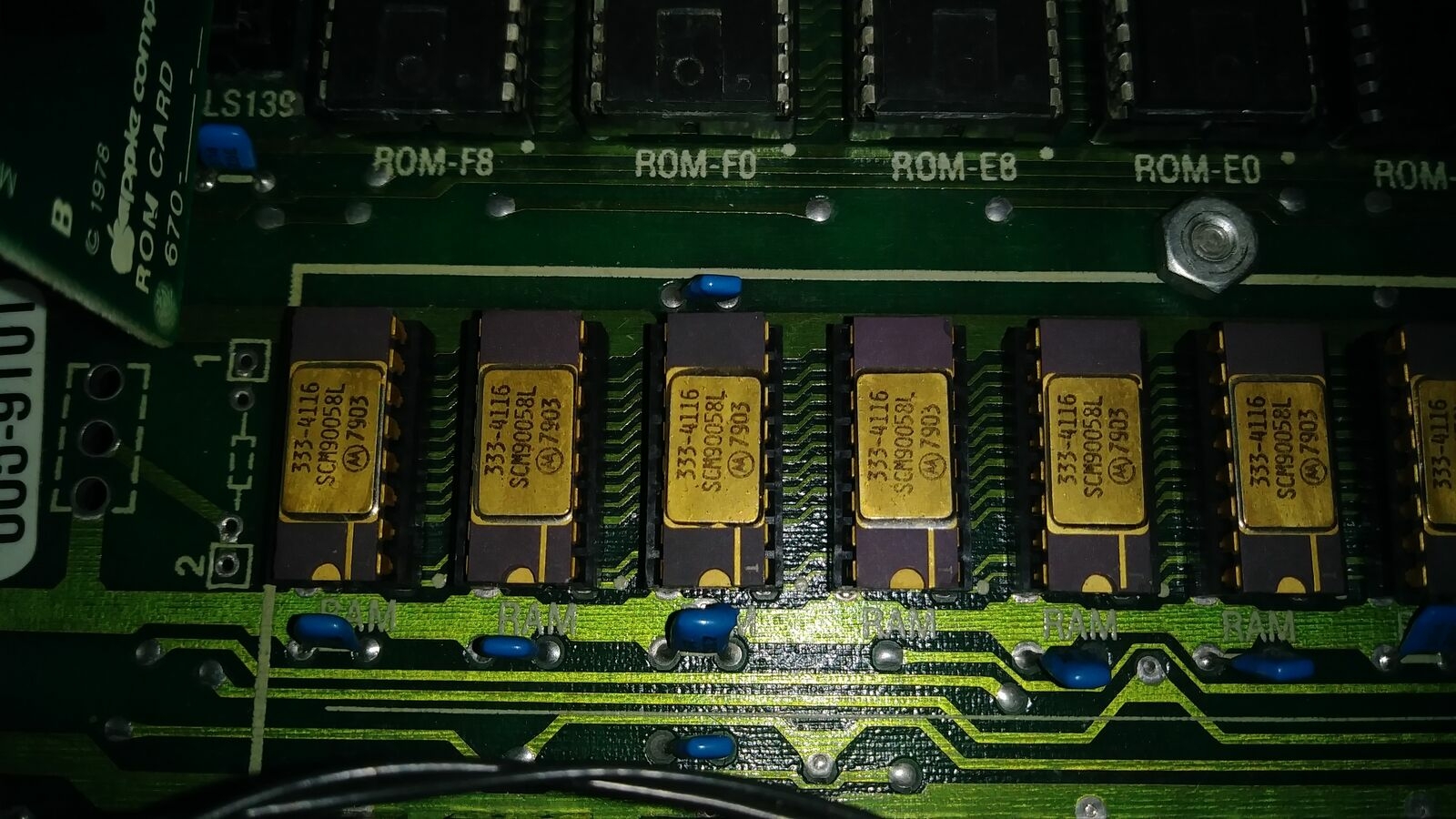
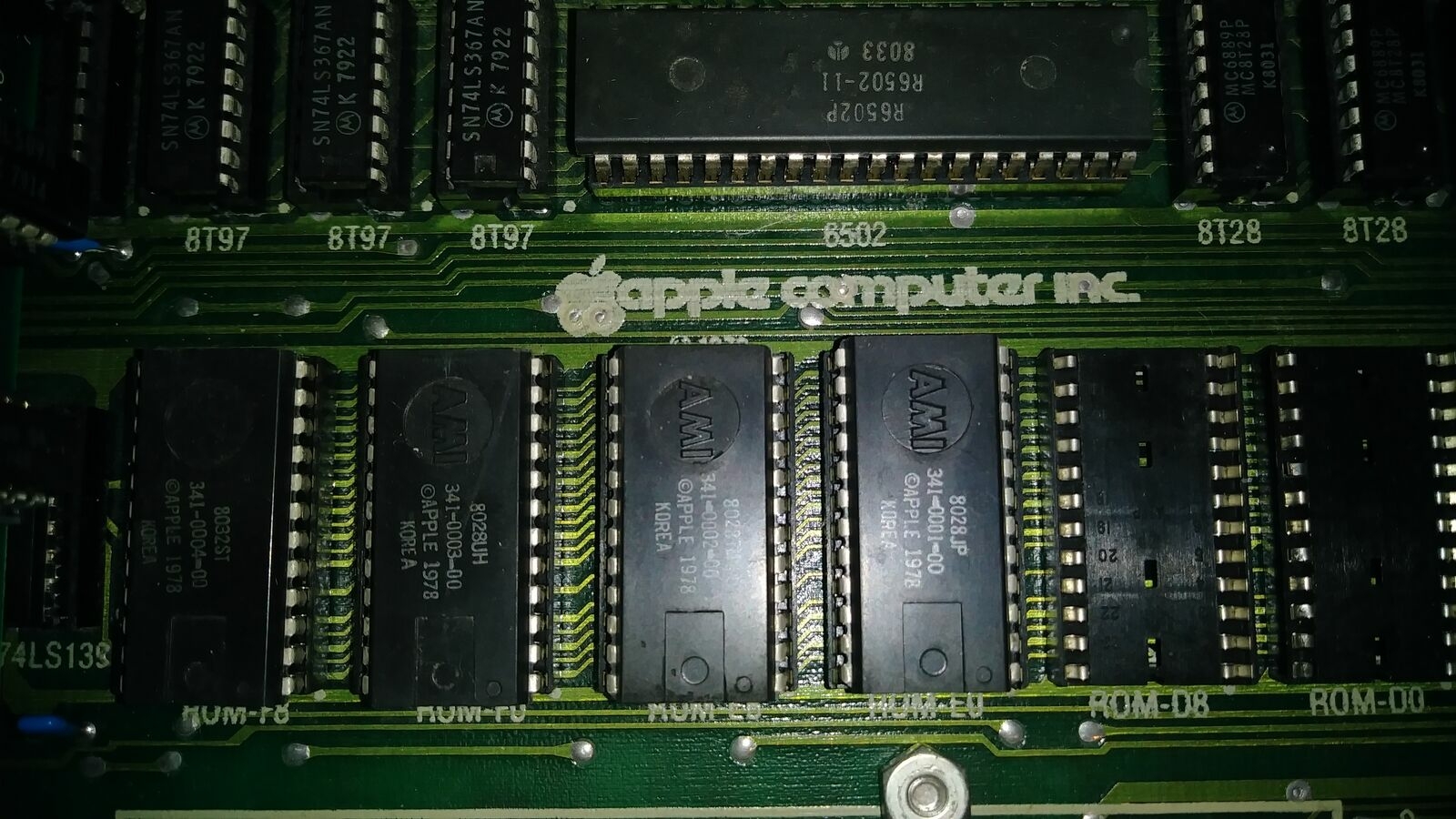
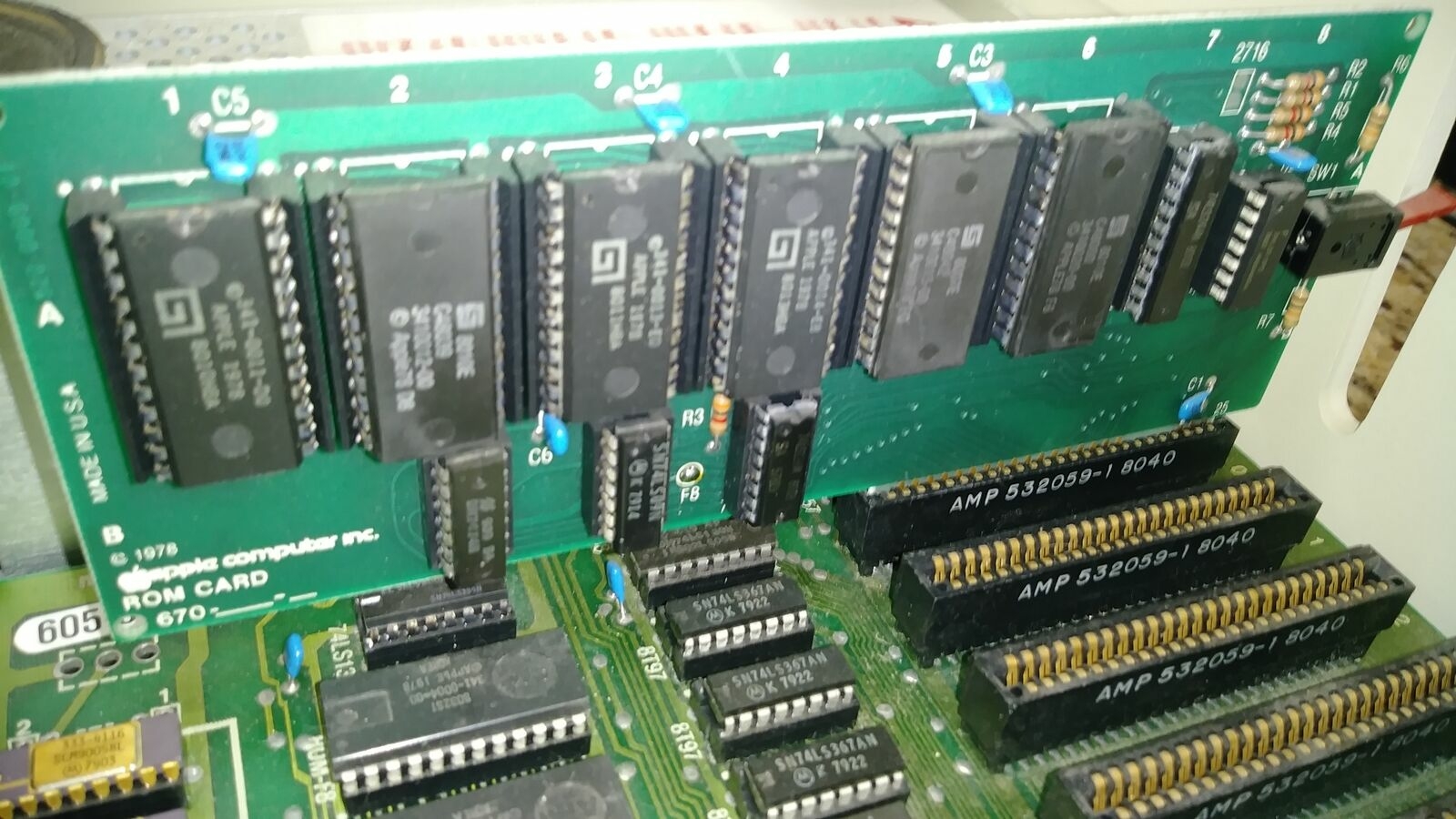
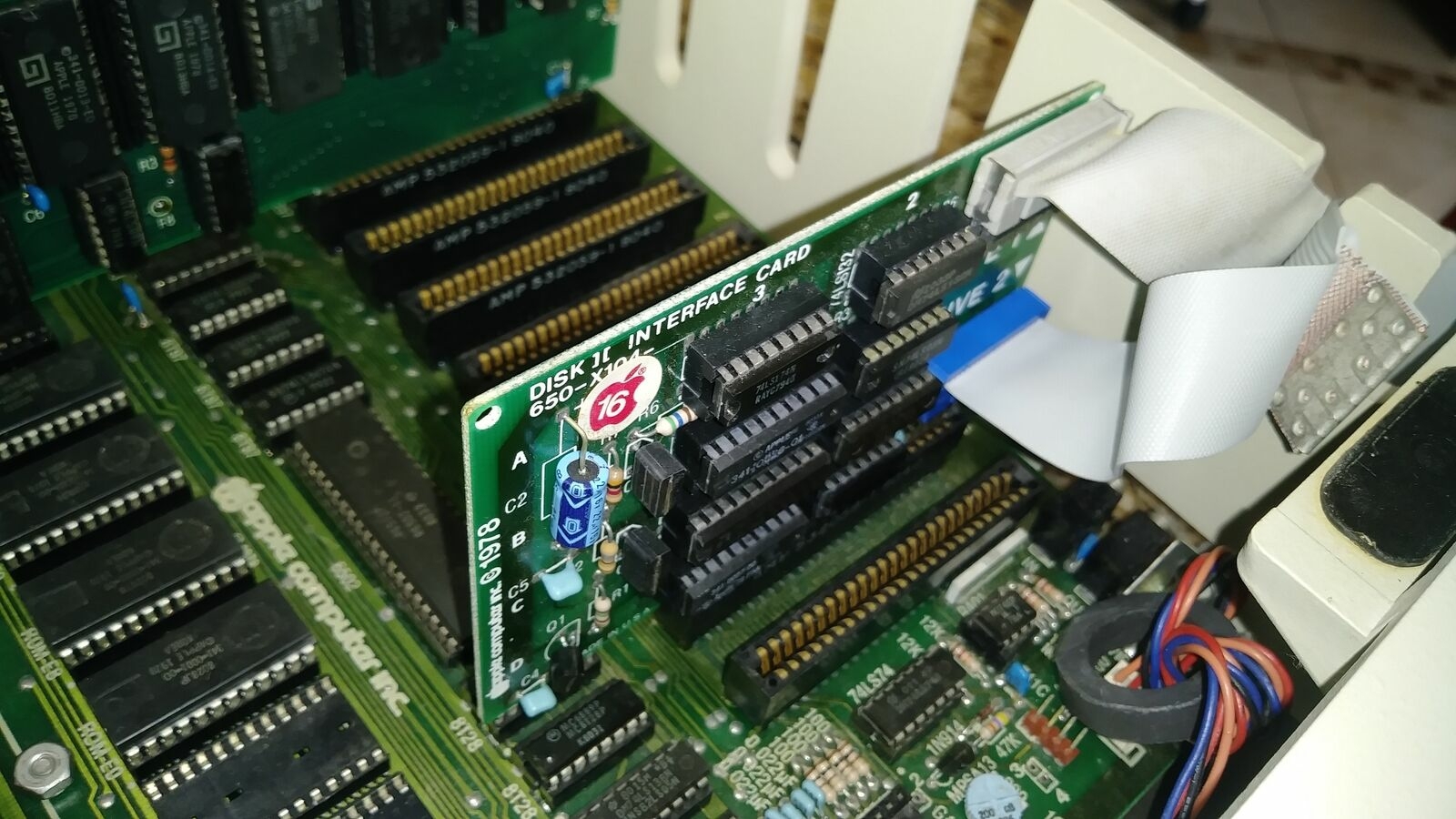
No, 22k range shells should have rev 3 logic board with manufactured date around 10th week of 1979.
The system has obviously been repaired through FRU swaps over the years.
The only thing that matches the shell is the keyboard. The guts have all been replaced.
FRU swap? Again, the ignorance... But does it seem like this mainboard was built by Apple to exist in a II? In other words, is this a "real" II, or a II Plus in II's clothing?
Also, from an external perspective, isn't a matching shell and keyboard all there is to match?
rev 7 board don't start showing up till late 1980 (week 30+) and have appeared in some red labeled IIs, but by and large they're in II pluses.
FRU (field replacement unit). Basically subassembly level parts swap. Instead of identifying which chip failed on a board, they swap the whole board. Boards are returned to factory for rework or recycling.
Why does the board say 1979 if it didn't come out until 1980? So are you saying it's likely that someone had a problem with their II and sent it to Apple for repair, where it was outfitted with a Rev 7 board? This brings me back to my original, and most fundamental, question: Is this an Apple II Plus, or an Apple II?
I did notice in the video of this machine in action, it says APPLE II PLUS at the top. That doesn't seem good. :-(
2020-05-28_9-51-41.jpg
The official Apple Service Procedure at the time, when any mainboard defect existed, was to swap out the mainboard.
This system has had its mainboard swappe. Nothing unusual there.
That is a ][+ mainboard, in an original ][ case and keyboard.
If you are looking at this an an investment, then, it isn't what you want; but if you want a good, solid Apple ][ with the Integer ROMs, it seems to be what I might want in that position. You can always seek out a Rev 4 Apple ][ mainboard in the future is you want to restore it to factory status.
Because that copyright date isn't equivalent to manufactured date. There should be a white patch behind the power connector on the logic board where manufacture date is either hand written in or stamped in, but I don't see any photo present with that information.
The last II+ production board (rev D/RFI) are still marked with copyright date of 1979, and those board did not enter production till much later.
The way in which software determines which Apple II model it is running on is typically based on ROM checksum or ROM signature bytes. So I wouldn't put too much faith in its ability to detect hardware as you can swap out ROM chips.
Thank you for the replies. What ballpark price would you guys put on this machine as pictured, with the monitor and two drives? Also, which would you say is the more valuable component of an "original" II: The case/keyboard, or the mainboard? Which is more difficult to find?
to be period accurate, you'll need a rev 3 board manufactured in early 79 (around 10th-12th week) and a matching power supply (probably A2M001 type... not sure since those are frequently replaced so I don't have an accurate record .)
while rev 4 board (introduced mid-late 79) are relatively easy to find, earlier board takes a bit more effort.
The handwritten code on the mainboard is smeared a bit, but to me it says 8101 or 8107, which I believe means it was made at the beginning of 1981. Is there some hard date cutoff after which the Rev 7 boards manufactured by Apple were destined for II+s? I kinda doubt it... It seems to me like there was a significant period of time where Apple used whatever they had lying around, resulting in Rev 4 boards in II+s and Rev 7 boards in IIs.
Unless there's something I don't know with the dates, it seems to me that Apple's intention when creating this board is what makes the difference between calling it a II or a II+. Isn't the fact that it has four onboard Integer ROMs evidence that it came from the factory destined for a II? How hard is it to swap those ROMs? Do they pop out, or are they soldered in? If you were a hypothetical user in 1981 who wanted their machine to run both Integer and Applesoft BASIC, how would you accomplish that? I think if your mainboard had onboard Integer, you'd accomplish it exactly as this board is set up, with an Applesoft firmware card. But what would you do if your board had onboard Applesoft? Would you set it up like this card by popping out the Applesoft ROMs and installing Integer, then installing an Applesoft firmware card? Or would you use a language card to load Integer into RAM?
s-l1600 (16).jpg
I guess what I'm asking is, can you think of a reason that the enduser would remove the onboard Applesoft ROMs and switch them for the inferior Integer ROMs?? If not, then to me this board was intended by Apple to be used in a II.
If you wrote or use a lot of Integer BASIC software, which in 1980/81, was pretty common, sure. You'd load AppleSoft into the language card.
For that matter, an Apple Service logic board swap may have retained the original customer ROMs in 1980. You could order the ][+ board without ROMs and without RAM for that matter, if the customer alreay had these, to save money.
Given that this system has a ROM card with AppleSoft, it'd take the palce of the onboar-ROMs anyway, so that is likely what happened.
P.S. That is a 48K mainboard. The only 'feature' that you lose from the ][ mainboard to the ][+ mainboard, is the ability to use 4K RAM banks. Externally, this system will function as an updated original ][ mainboard. You can always downgrade a ][+ mainboard to Integer ROMs and remove AutoStart to make it behave like the original ][.
I have no clue what price you are being asked for the system. I'd be more concerned with the keyboard mechanism, than with the mainboard, if I were you. If it has a Datanetics keyboard, they are notorious for keys not working properly, and restoring them is both not fun, and very hard to do due to lack of parts availability.
P.P.S. That monitor did not come out until around 1983. It's the Monitor //, which was released after the Monitor ///, and at the time that the ][ an ][+ were released, you were expected to buy an off-bran monitor, or use a telly.
Thanks Timelord for the info! It's my understanding that there would be no reason for the enduser to "upgrade" the original Rev 3 board to a bare Rev 7 II+ board, moving over their ROMs and Applesoft firmware card. Is that correct? So to me that means almost the only scenario where this machine ends up in its current state is in early 1981, the owner had some sort of problem and sent the computer back to Apple for repair. Apple replaced the mainboard with a Rev 7 and moved the user's original ROMs and Applesoft firmware card to the new board. Does this sound right?
Thanks for the heads up on the keyboard. I'm guessing this has been discussed extensively on this forum. Do you know of a good thread where this is discussed? I don't know anything about the keyboard currently....
As you've said, it's probable the original rev 3 board failed in some way and the owner took it to an Apple dealer for service.
The dealer just do a board swap as component level troubleshooting is time consuming. The power supply looks like a salvage from a late model IIe as well, but not unexpected since those tend to fail, a lot.
I don't do price estimates since pricing on fleaBay tend to vary widely (and is dependent on the phase of the moon.)
All Apple service techs did full board swaps until 1996. If you had good ROMs, you (the service centre) could order a board w/o ROMs and swap out the board, then install the customer's ROMs. This unit would likely have had an Apple ][ Rev 4 mainboard ( but that is based on the serial number; as far as I am aware, a serial number under 30,000 would have had Rev 4, not Rev 7. ) so it would not have been done to 'upgrade it'. Only the Rev 0, and possibly the Rev 1 boards were ever swapped for that reason (to add two colours).
If you look at an Apple Service manual, it'll say 'swap mainboard' in any place where mainboard component failure occurs. You weren't supposed to repair at a component level, and Apple never provided the schematics to allow techs to do that. If you knew enough about the system architecture, you could do it for small failures.
I would suspect that at some point, someone pulled or installed a slot card while the system was under power, blew the mainboard, sent it for service, and received a board swap. Because they ha an Apple ROM card with AppleSoft and a normal Integer set, the tech woul have one their best to return it to them with the same configuration as when they received it. i.e., swap the mainboard, install the original Integer set and the ROM board, and return it to the customer.
Note that the RAM is also not all the same type. This tells me that it was swapped in from the customer's original mainboard, which was 32K factory or 16K factory; or was some oddball size of 1/4K banks. The dealer installed their original RAM, then installed one bank of new 1K chips. I would suspect that they had a 36K machine originally, with a 4K bank in the middle, but because the Rev 7 board only supported 6K banks, their 4K bank had to be converted to a 16K bank, hence the new chips being installed in bank 1, not 0 or 2.
That way, the customer doesn't run into issues where they expect their hardware configuration to be X, an it is somehow now, !X.
There wasn't an Apple store at this time, and unless you had to send it direct to Apple, you (the machine owner) went to an authorised service centre, of which there used to be thousands. Back in the early 1980s, you didn't need to do much other than to pay Apple a small fee to become an authorised service centre, or dealer. Remember, until 1983, Apple wasn't a huge company. They were only too happy to allow people to set up shoppe as a dealer / service centre; with both in one place pleasing them the most.
Because dealerai were also in the business of servicing machines that they sold, or even that they did not sell, the Apple literature was dumbed down to allow less-experienced techs to do repairs. Have a faulty Disk ][ card? Swap it out. Have a blown ROM select 74LS? Swap the entire mainboard.
That's just how it worked. Fully-experienced techs and general hardware nerds could pinpoint failures and fix just that part, but these were an exceptional minority at the time.
One thing that I will note, is that we do not have absolute documentation regarding serial numbers and how they correspond to production years. If you are buying this because you want it, then, why does it matter? If you want a 'museum piece', then unless you intend to show off the guts, nobody will know the difference. If you feel it somehow fails to provide the sme experience as a Rev 4 mainboard, well, it won't cause you any issues.
Again, at what price was it offered to you? If the price is reasonable, then why worry about the mainboard revision ID? I would again stress that the usability factor could be a greater issue if that keyboard mechanism is at all lazy. If any of the keys do not return to their true (unpressed state) on pressing them, or any fail to work normally in general, you are in for a headache; unless you swap out the KB to a later model ][+ type, in which case you are removing yet another original component from the system to make it operable.
For whatever it is worth, my original ][ also lacks its factory mainboard--was a factory Rev 0, and now is a Rev 4. This was a common replacement at the time. I restored the original Datanetics keyboard (with the 'unicorn' power light), and it works just fine, but it's an AppleSoft ROMset. I didn't want to go through the hell of reverting it, just to have to load AppleSoft from diskette. The primary reason to want Integer ROMs is if you have a lot of Integer BASIC software on disk or on tape, that you regularly use-particularly if it is on tape, and you do not have a Disk ][ drive.
P.S. The changes on this system over its lifetime tell a story, and IMO it'd be a shame to tear down the history of this specific system just to revert it to a factory state.
Again, thanks so much for taking the time to write these great replies! A n00b like me really appreciates it. Why I'm interested in this machine is both for my personal use/learning, and for the collector value/cachet of owning an original II. If it were just about function, I'd get a II+ and spend a lot less money. Of course it would be cool (and more valuable) if it were an 'all original' machine, in the same way that car collectors like 'numbers matching' cars, but it's comforting to hear that the swapping of a mainboard is not an uncommon or unacceptable practice. What I really wanted to make sure of is that this wasn't a situation where the enduser "upgraded" their machine by switching out the mainboard themselves for a newer model. Had that happened, I'm not sure you could still call it an Apple II. But it seems there would be no reason whatsoever for someone to do that, so I'm confident it didn't happen.
I don't know yet what I'll do with this thing in terms of keeping it as is, or seeking to return it to its factory state. I did just win an eBay auction for a Rev 4 mainboard, mostly out of FOMO. Who knows if I'll resell it, or actually use it.
it's quite true that there has been no known official record of when Apple phase in new board revisions when the II was still in production.
My numbers are based on observation over period of about three years of all the IIs that moved through fleaBay.
After fifty or sixty entries, board revision and dates can be loosely coorelated, and machines with board swap also sticks out like sore thumbs.
At the end of the day, the sticker on the bottom of the case classifies it as an original ][. I will take better photographs of my own systems in the coming weeks, but you can see a few differences here:
https://www.applefritter.com/content/apple-restoration-project
Note that I have since swapped in a Rev 4 board, but I haven't come across its original Rev 0, which is likely because we turned it back in for an update.
I have been meaning to photograph this again, now that it is set up, but it seems that two switches on the Datanetics board decided to give me some additional hell. The reset switch split apart, and unlike the '1' key, which did the same, I was unable to resandwitch it before its inner connections misaligned. Two other keys on it asn't responding as well as I would like--one registers double presses on occasion, and one requires more force to engage than it should, but that all said, it is probably working better than most Model 0, 1, or 2 Datanetics boards today.
The system itself runs fine. If not for the reset switch deciding to split open, I would have let it be, but as I hae to go backc in anyway, I may as well correct the others at the same time. I specifically used this switch as it gave a tiny bit of resistance when pressing it, and I felt that it would be nice to have that on the early keyboard, which did not have anything to prevent accidental reset, but that resistance was actually a sign that the plastic DC61 shell was not wholly solid.
I very strongly advise getting full clarification on the eyboard of this machine. I cannot stress enough that repairing those eyboards is a miture of expensive, or impossible at present. If any keys do not respond properly, or any keys do not spring up properly, anticipate taking great time and investing money into repairing it. Having now done this twice, I have a good idea on methos to use to repair them, but it is not fun. Get the current owner to properly test it, as 'it works' isn't sufficient at all.
If a key doesn't spring up fully, then it can be in a closed state which can corrupt the matrix by closing a gate that interrupts the press of another key on its bus line, or at best, won't register its next keypress. If its contactors are corroded, then it can possibly be salvaged, but only about 60% of my DC51 switches could be saved, and then only after days of repeated soaking in two types of contact cleaner plus contact lubricant, and hamering on them uite literally for hours during this process, at a cost of over £120 in chemicals alone. Never, ever, use water on that mechanism. It will surely guarantee that it never works again.
Further, it took a week to air dry enough that it would work at all after that cleaning process; and then, once I had identified the switches that failed to revive, I had to carefully desolder them, desolder switches from a donor board, test those, and solder them into place; and it still isn't perfect.
Ask for photos of the keyboard mechanism inside the case, too. This will help to identify the revision of it. Mine is Rev 1 (a.k.a. the 'second version, seen here: http://www.willegal.net/appleii/images/keyboard-second.jpg).
Resources state that the Rev 2 has a square power lamp, although I believe that I have seen the Unicorn key on the Rev 2/3 keyboards; at least, I have had a moel with the separate decoder board that had a half-shield keycap on it, which indicates that it used the Unicorn lamp key, rather than the square white insert, that latches onto four notches. This tells me that there were either surplus of that lamp type, or that early ][+ systems used the separated ecoed style board, but the earlier keycaps.
Note also that the ][ key colour differs from the ][+ RFI key colour. By the time that the RFI board was produce, Apple had switched from a shiny brown keycap, to a darker, satin, chocolate keycap with slightly different lettering. The early keycaps were manufacture by Datanetics, an the latter switches, I believe were manufactured in-house, an changed slightly to avoid patent issues.
Suggested reading: http://www.willegal.net/appleii/early-a2-keyboards.htm
Ideally, etting a glimpse of the side of the mechanism, and the unerside will inform ou of its revision; but ideally, you want a full test of the bugger so that you know what to expect.
It seems like the keyboard might be an early copy of the second version. The only picture of the keyboard that I have looks like the domed power light (what I think you called the 'unicorn').
s-l1600 (3).jpg
2020-05-28_23-10-41.jpg
Unicorn being slang here, because it has a white horned top. The official term is 'half-shield', based on the way that it clamps onto the mechanism. That is the same as my model, but you can't tell the KB revision, until you look at it on the inside.
Well, great thread, I was recording information from ebay listings from around 2013-2016, and based on that evidence I agree with everything above. The only thing I can add is that there are a couple more dates you could look for if you wanted. If you were to remove the screws from the base, and turn the shell upside down, inside near the keyboard you may find a production date for the case. And if you detach the keyboard, you may find one or more date codes for when that was produced.
Side Trivia: you could still buy an Apple II all the way up to 1982! Though as a practial matter, I doubt many people did. It would have all the same components as the II+, except for the ROMs, the case label, and the serial sticker.
Very interesting! It's so odd to me that the two models were really indistinguishable from each other, other than ROMs. Releasing a "new" model with all the same specs is not something that would fly today, LOL. I should have the computer in my possession in a few days. I can post detailed pictures then. Thanks!
I'd be curious if it has the same plastic as the ][+, based on its serial number. My ][ has very notably different plastic, than the standard ][+ case, but that material may not have been used after 1978. I'm unsure. The early plastic material is one of the truly notable, and easy ways that distinguishing between the ][ and the ][+.